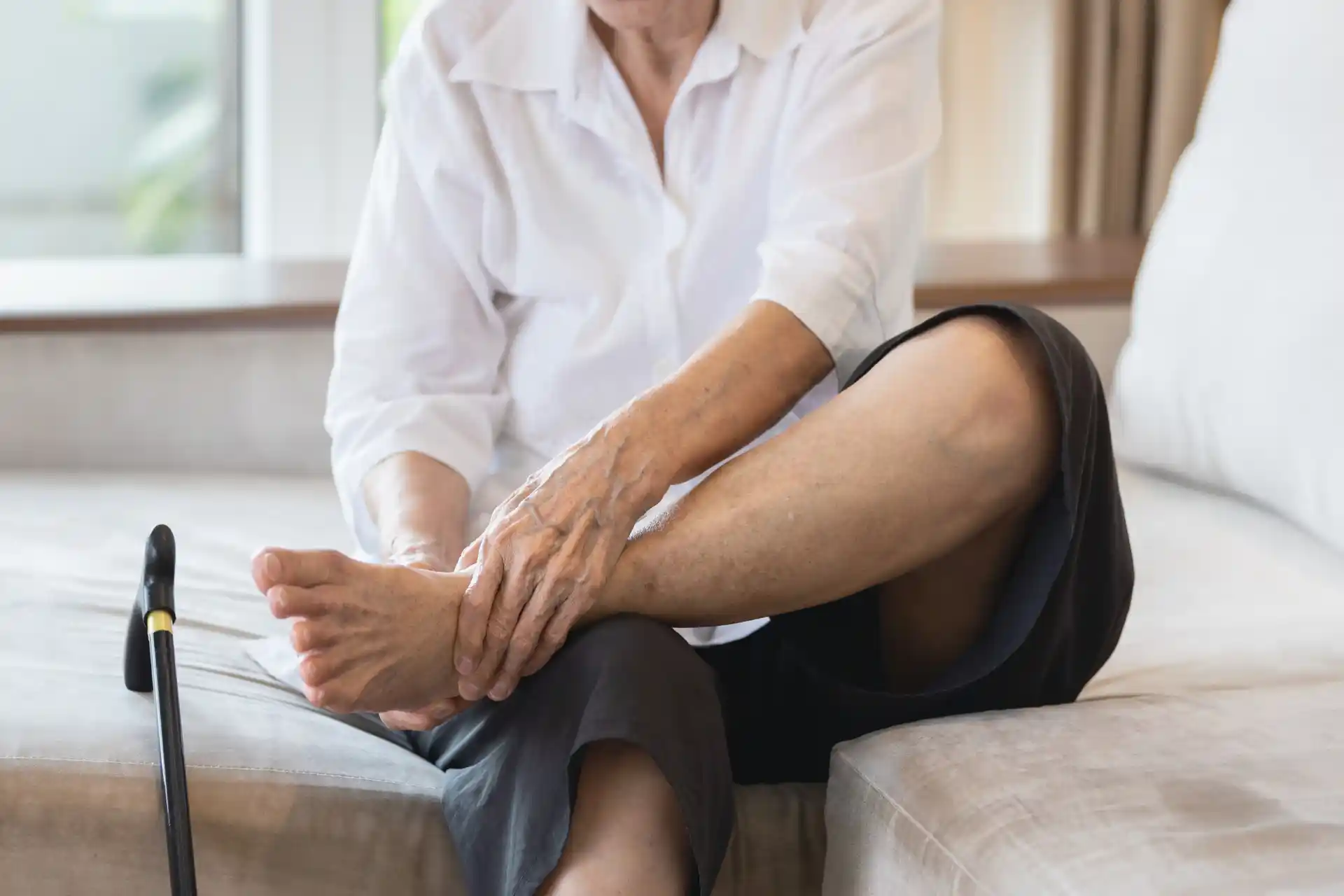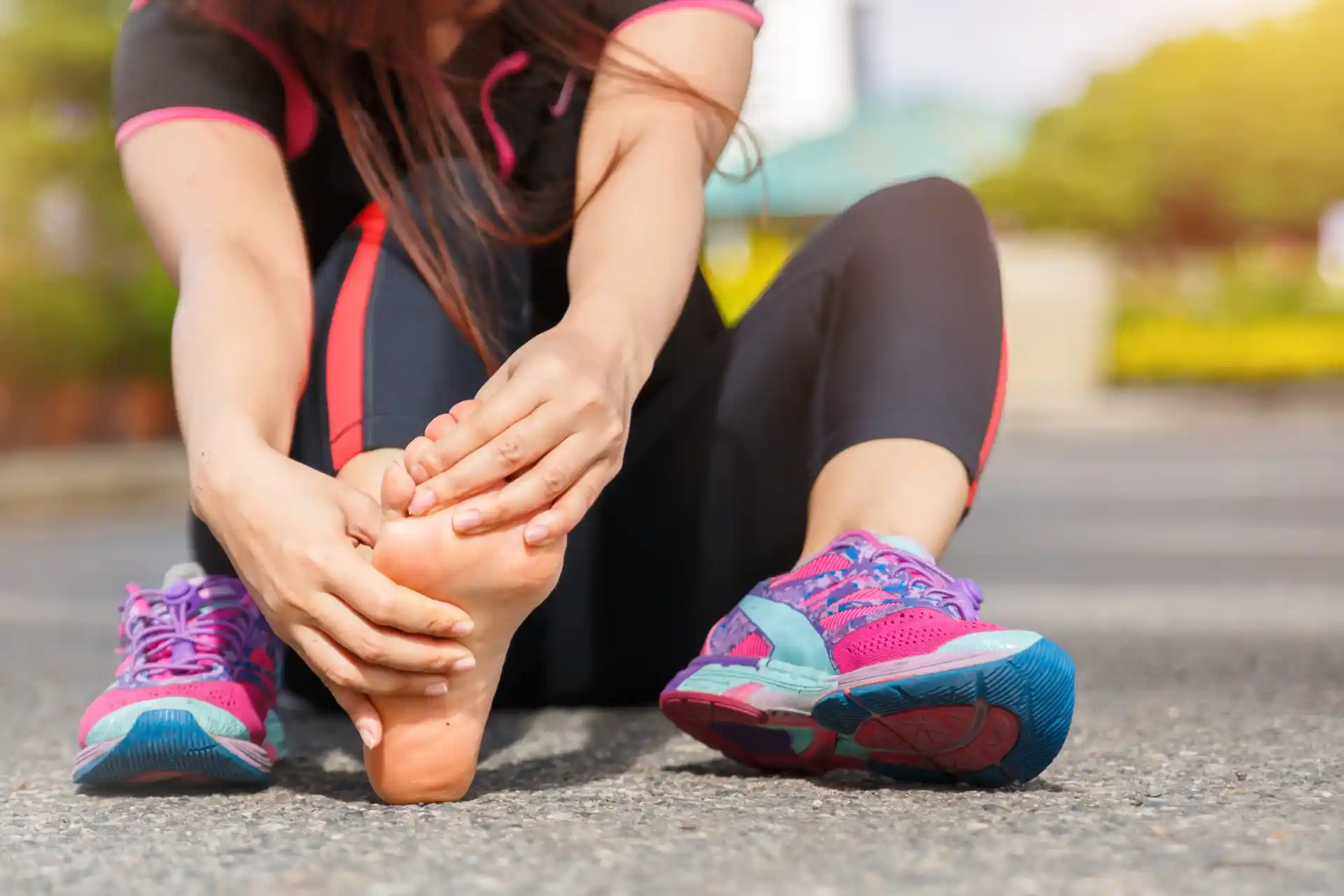Managing Knee Pain without Surgery
Addressing knee pain doesn't always require surgical intervention.
Various non-surgical options are available that can help manage and alleviate knee pain effectively.
These treatment options should be treated as a general guideline, always consult with a healthcare professional for personalized guidance on medication and treatment that is right for you.
Lifestyle Changes for Knee Health
Weight Loss for Knee Pain Relief
Losing weight can make a significant difference in managing knee pain.
Carrying extra pounds increases the stress on your knees, which can hasten the destruction of cartilage and increase the risk of developing knee arthritis. Weight loss can help reduce knee pain and delay the need for knee replacement surgery (Johns Hopkins Medicine).
For individuals with knee osteoarthritis, even small amounts of weight loss can have a significant impact.
Research shows that each pound lost can reduce the load on your knee by three to six times, thereby improving physical function and biomechanics (PMC).
To read more about related knee conditions, check out or detailed articles on knee bursitis, ligament injury, and patellar tendinopathy.
Benefits of Physical Activity
Engaging in physical activity is another crucial lifestyle change that can benefit those suffering from knee pain.
Regular exercise helps to strengthen the muscles around your knee, particularly the quadriceps and hamstrings, which can improve joint stability and reduce pain.
Consider looking into knee strengthening exercises and exercises for knee pain to incorporate into your routine.
Remember to always consult with a healthcare professional before starting any new exercise program to ensure it's safe for your specific condition.
At-Home Measures for Knee Pain
Effective self-care measures are crucial for managing knee pain without surgery. Simple practices can make a significant difference in reducing discomfort and improving mobility:
- Rest: Give your knee a break from activities that aggravate the pain.
- Ice: Apply ice packs to reduce swelling and numb the pain.
- Compression: Use an elastic bandage to compress the knee and minimize swelling.
- Elevation: Elevate your knee to decrease swelling.
- Hydration: Drink plenty of water to maintain joint health.
For more detailed practices, check out our article on natural ways to heal knee pain.
Over-the-Counter Medications for Relief
Over-the-counter medications are a practical option for temporary pain relief.
They can be particularly useful for managing acute pain episodes:
- Ibuprofen (Advil, Motrin): Reduces inflammation and alleviates pain.
- Naproxen Sodium (Aleve): Provides long-lasting pain relief by reducing inflammation.
- Acetaminophen (Tylenol): Relieves pain but does not have anti-inflammatory properties.
For more information on pharmaceutical options, visit our guide on what is the best painkiller for knee pain.
Topical Creams for Pain Management
Topical creams can be a viable alternative or supplement to oral medications.
They work by providing localized pain relief directly to the affected area (Mayo Clinic):
- Lidocaine: A numbing agent that provides temporary relief by blocking nerve signals.
- Capsaicin: Derived from chili peppers, it helps to reduce pain sensation by depleting chemicals involved in transmitting pain signals.
For additional methods and products that can help manage knee pain, look into our article on knee arthritis treatment without surgery.
By employing these self-care measures, over-the-counter medications, and topical creams, you can effectively manage knee pain without resorting to surgical interventions.
Non-Surgical Treatment Options
There are several non-surgical alternatives available for addressing knee pain.
These options aim to manage pain, improve mobility, and prevent further damage to your knees.
Physical Therapy for Knee Arthritis
Physical therapy can be an effective way to manage knee arthritis without surgery.
It focuses on strengthening the muscles around your knee, particularly the quadriceps and hamstrings, to improve joint stability and function.
Physical therapists use a range of techniques, including exercise, massage, and thermal treatments to alleviate pain and restore mobility.
Some commonly recommended exercises include:
- Quadriceps strengthening
- Hamstring stretches
- Balance exercises
For detailed exercises to help with knee pain, consult our guides on knee strengthening exercises and stretches for knee pain.
Injection Treatments for Knee Pain
Injection treatments can offer temporary relief from knee pain. Commonly used injections include cortisone shots and hyaluronic acid (HA) injections, which can provide relief for a few months (Johns Hopkins Medicine).
These treatments are particularly useful for individuals with severe pain or inflammation.
Additionally, newer injections are being studied, such as:
- Platelet-rich plasma (PRP)
- Concentrated bone marrow/stem cells
Each of these injections has its own benefits and potential risks and its worth noting that the efficacy of PRP and stem cell injections are still under research.
For more details on managing knee pain with injections, visit our article on regenerative knee treatment.
Cartilage Replacement Techniques
In some instances, when knee arthritis is limited and bone alignment is good, doctors may suggest cartilage replacement techniques.
One such technique is Autologous Chondrocyte Implantation (ACI), where cartilage cells are harvested from the patient, grown in a lab, and then re-implanted into the knee.
These advanced techniques can be beneficial for:
- Young, active individuals
- Patients with localized cartilage damage
- Those who are not ready for a total knee replacement
Learn more about these promising techniques in our article on degenerative knee joint treatment.
These non-surgical treatment options can provide relief and improve your knee function, allowing you to maintain an active lifestyle.
For additional pain management strategies, explore our articles on sharp knee pain and knee pain.
Seek RELIEF®
RELIEF® is a science-backed, targeted approach that targets dysfunctional fascia that surrounds the affected knee tendons.
The treatment utilizes hydrodissection—a fluid-based technique that gently separates and releases adhered soft tissue layers and fascia, which may contribute to knee pain and degenerative joint symptoms.1,2,3,4,5,6,7
RELIEF® is a minimally invasive alternative to traditional treatments—and requires no steroids, medication, surgery, anesthesia, or post-procedure immobilization.
Contact us today to schedule a consultation and learn more about how RELIEF® may help with your knee pain.





.jpg)
.svg)